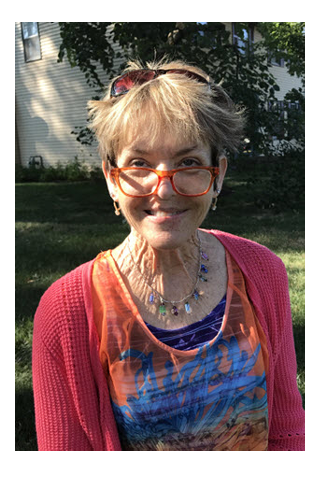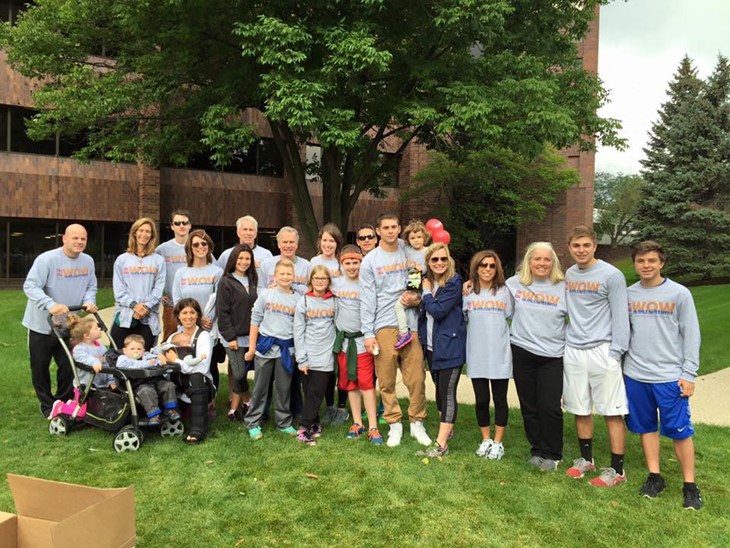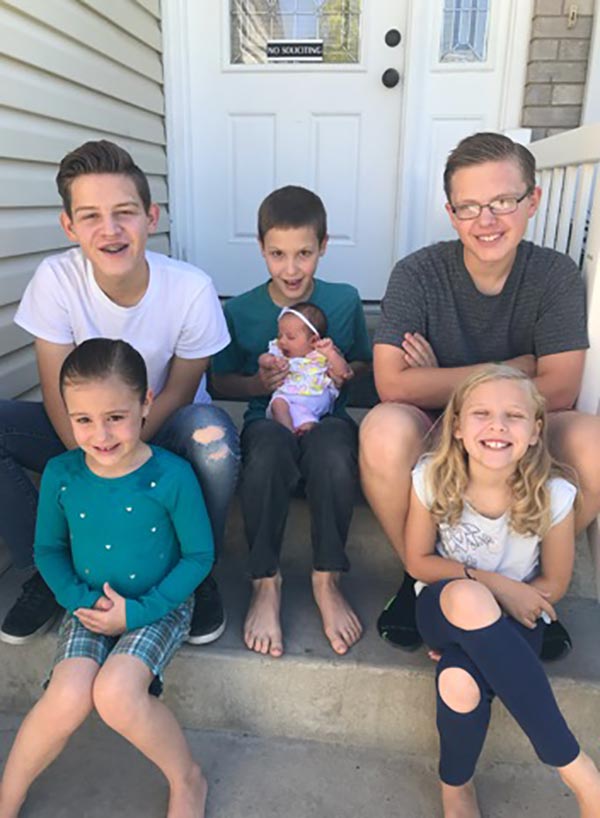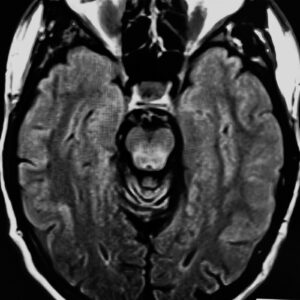
Janice Wagner
Hi. My name is Janice and I’m 57y/o. In 1975, at the age of 15, while in 9th grade, I was diagnosed with Wilson’s Disease. I have definitely been one of the lucky ones!!!!
I presented neurologically with symptoms that mimic Parkinson’s. At that time, I drooled, had tremors, slurred speech, difficulty with swallowing, was generally uncoordinated, “giddy” per my mom and had illegible hand writing, so much so that my teachers used to give me my papers back saying that they couldn’t grade it because they couldn’t read it!!
I was on the morning announcement system and there were reports that it was too difficult to understand me because of my slurred speech. I couldn’t read the announcements because my arms had such bad tremors that the paper wouldn’t stop moving. My gym teacher called my mom to report that she noticed I had become uncoordinated in class. Kids that supposedly were my friends made fun of my slowed movements, and deliberate gait. That continued into my sophomore year which I remember to be very painful emotionally.
Thankfully my mom knew to take me to a pediatric neurologist at Cleveland Clinic as I’ve heard nightmares about incorrect diagnoses with devastating and even sometimes deadly outcomes. As I said before however, I’m one of the lucky ones!!!! The diagnosis was made by a fellow in training; my Kaiser Fleisher rings were visible to the naked eye, which assisted him in making the correct diagnosis! I was pretty upset! I remember hearing the word brain and freaking out! All I could imagine was that my beautiful long blond locks would need to get cut off for brain surgery!! And no more pizza or chocolate!! No way- they were my favorites of all food on earth!!!! (The thoughts of a 15y/o)‼️‼️
Thank God I was diagnosed early enough so that most of my symptoms reversed themselves over the years with the use of Cuprimine and following a low copper diet.
Years of being on the Cuprimine took a toll on my skin, and I eventually developed two rare side effects; Elastosis Perforans Serpiginosa otherwise known as EPS and what some people just call progeric wrinkling, but my dermatologist calls Elastosis which essentially is loss of elasticity of the skin. It occurs at the neck and at joints mostly.
I have always been extremely self conscious of these wrinkles and the EPS lesions especially when they were super obvious and presented all over my neck. Again, though, I lucked out as my understanding is that 50% of the time Cuprimine can exacerbate neurological symptoms. I thankfully didn’t succumb to that one.
Trying to find a doctor to switch me to Syprene, a less toxic drug,presented a whole nother plethora of challenges. That was finally accomplished, and another switch and now I have been on Galzin for approximately 23 years.
I’m an Occupational Therapist, married, and have a son.
My later year struggles with WD have mostly been early arthritis requiring the need for bilateral knee replacements, and a few C-spine fusions starting in my thirties. I’ve also struggled with taking the zinc on an empty stomach as I developed Insulin Dependent Diabetes when I was 29 y/o and I sometimes awaken with a low sugar or have one right before bed which of course requires food and that is when I normally take the zinc, of course! I also need to say that I have recently had many issues with balance/falling a lot and memory/ not remembering words. Well, the FIRST thing to come to mind is of course, Wilson’s. Could it be rearing it’s ugly head AGAIN?? Of course it could, but it wasn’t. It was other things causing these problems, thank God again!!
On my last note, I again want to reiterate HOW LUCKY I AM AND HOW BLESSED I FEEL!!!! And it is much more difficult living with the Diabetes than with the WD!!! I still consider myself a Wilson’s Warrior however!!

Kelsy Walsh
In 2009, I was off to Colorado to start a new exciting chapter in life as a Musical Theatre Major at CU Boulder. About 3 weeks in I stayed back one day because I was feeling super run down. That night I woke up in my dorm room and headed to the bathroom, I didn’t make it too far as I started blacking out and ran right into a wall. The next day my eyes were highlighter yellow and I kept passing out. This started about a month stay in the hospital and daily tests as we tried to figure out what was wrong. It was finally confirmed I had both Wilsons Disease and Hemochromatosis. Once out, It was a rough go, to try to get back into action and try to get back to a normal college life. Little tasks were exhausting, my singing voice completely changed after all the meds as well as my body from the steroids. It was like everything I had worked for was ripped away and I found myself having to start over and figure out a new path. Not to mention being 18 and going to meetings about liver transplants was terrifying, I was not in a good place.
I am so thankful to have had my sister and parents by my side during the whole process. It took awhile but I finally started getting back into a groove, and began dancing again and finding my way. I met my amazing fiancé and have two beautiful kiddos and now reside in Colorado for good.
Wilson’s Disease can feel lonely at times as 1 in 30,000 have it and while I am blessed to say I currently am living a pretty normal life, with each test and all the constant blood work it can be an unsettling reminder of where things could turn at any point.
A couple years ago I attended a Wilson’s walk in Chicago surrounded by so much family and it was a great reminder of all the support and love that has surrounded me the last 9 years, and it was a chance to hear other peoples stories and meet others who have been affected as well.
This year I am hosting a walk because I find it is so important to know you’re not walking alone on this journey! I hope to raise more awareness, and share/learn more peoples stories and make something positive out of what can feel like an otherwise tough situation.

Kayla Weselowski
Hi, my name is Kayla Weselowski. My sister Chelsea and I were both diagnosed with Wilson’s Disease in 2012. We live near Winnipeg, Manitoba, Canada.
Chelsea is 29 years old and has severe brain and tissue damage from the disease as shown on multiple MRIs. She requires 24/7 care and has not been able to talk or move much since 2013. She was in the hospital for two years taking zinc, then tetrathiomolybdate which caused low WBC and several bouts of pneumonia, and now she currently takes trientine.
I am 26 years old and have chronic pain, anxiety, depression, scarred muscle tissue, and muscle tension/spasms. Initially, I presented with muscle pain and tension, a fatty and enlarged liver, fatigue and swelling. For treatment I tried the same sequence of medications as my sister, and I am currently taking trientine as well. I believe that this medication causes much of my abnormal muscle pain, tension and spasms as side effects of the drug, but treatment options are limited at this time.
My goal is to raise awareness about Wilson’s Disease, and to fund research for diagnostics and new treatments that will greatly improve the quality of life for people all of the world that are living with this disease.

The Wells Family
In 2016, my son started having a lot of bloody noses. We live in a dry area, so we didn’t think much of it. Even the doctors said it was due to the climate. But they were getting so bad. They were daily occurrences, and there were several times that he even had blood coming out of his eyes. That August, he got sick with what we thought was a stomach bug. That was a Saturday evening, but by Monday he wasn’t feeling any better, throwing up if he ate much more than a bite at a time..
Tuesday evening, we noticed that he was looking yellow, so we decided to take him in, knowing that that could be a sign of problems with his liver. After doing some labs at the urgent care, they determined he needed to see a specialist up at the Children’s Hospital which is three hours away. They were going to schedule us sometime within the next week or so, but then the INR results came back. His blood is not clotting well, so they told us to go to the ER children’s hospital that night. We got there in the middle of the night (esrly Wednesday morning), and after lots and lots of tests, they determined that his liver failed. Within 24 hours after we got to the hospital, his kidneys shut down and he needed continual dialysis. He was dealing with encephalopathy and was going downhill quickly. His bilirubin and ammonia levels were skyhigh. Within 36, he was in the ICU and on the transplant list. That evening (Thursday) they diagnosed him with Wilson disease. The doctors said this was a blessing because it would put him higher on the transplant list. Two days later (Saturday), they found a matching liver, and he went in for surgery late that night. (Early hours of Sunday morning). It was a rough recovery, but we were so grateful for the outcome. Within a couple of weeks, they tested all of our other children. It was determined that our two girls , age 3 and 6 at the time, also had Wilson disease. Our other two boys were carriers. The doctors did a liver biopsy on each girl to determine where to start on treatment. They were surprised to see how much copper had already accumulated with them being so young, and my three-year-old had even more scarring on her liver than my six-year-old. The girls are both on Trientine, And though it has been a pain to get the medicine at times, they have responded well to treatment. We are wanting to get them on zinc, but so far they have both not tolerated it well at all. They throw up violently, on a daily basis with zinc (galzin and gluzin-which was worse for both girls), and their liver team decided it would be better to stay on the chelating medication to prevent them from having problems with throwing up every day. They told us that we could try other forms of zinc overtime to see if we could find one that they tolerate. In November, zinc called a zinc bisglycinate that they both seem to tolerate really well. However, I am not 100% sure if it will work like the other zincs, and I’m a little nervous to switch to it as they would have to take it three times a day. One challenge with young kids, is getting them to take your medicine when it’s time. My now seven-year-old struggles almost every day remembering to take her medicine. I’m not sure if it’s an attention span thing, or lack of desire to take the medicine, but she’s only on one pill a day. The fight but it takes every day makes it hard for me to ever want to go on the zinc permanently with her. I’m worried she would not take her medicine like she should, and cause further problems. We had our sixth child in July, and were able to get her Genetic testing, which confirmed that she too has Wilson disease. Our Liver team is currently in the process of deciding where to start with treatment for her. Typically, they would just start on zin genetic testing, which confirmed that she too has Wilson disease. Our Liver team is currently in the process of deciding where to start with treatment for her. Typically, they would just start on zinc, however, with how much copper my other girls livers had already accumulated at a young age, they are looking into where they should start with the baby. Overall, we are grateful for the way things have gone for us. We know that things would’ve been a lot different if it affected our son neurologically. A quick liver failure with a transplant was a huge blessing compared to what other people are dealing with.

Emilee Williams
For the past five years, Emilee Williams (now 26 years old), has been struggling with Wilson’s Disease. She graduated with honors from Rockhurst University in just three years. She received a bachelor’s degree in Exercise and Sport Science and a minor in Spanish. She had just started her first semester of graduate school at Rockhurst University for her doctorate degree in physical therapy when she was forced to withdraw because her symptoms became too severe to continue her coursework.
Emilee’s symptoms started approximately three years prior to her diagnosis and included swelling of her legs and feet, mood and behavioural changes, a tremor in her right hand, muscle cramps, dystonia, slurred speech, and balance loss. Emilee and her family were determined to find the answers to her symptoms. Every doctor she went to said she suffered from anxiety and depression, however, none of the different antidepressants she was prescribed helped her symptoms. Emilee and her family kept looking for answers and asked for a neurologic workup several times during the year prior to her diagnosis.
The final push for a neurologic workup came from her very own graduate school professors. Emilee’s doctor finally ordered an MRI, which revealed the “panda face,” and put her on the path to a correct diagnosis. The MRI’s “panda face,” lab results, and the presence of Kayser-Fleischer Rings in her eyes solidified the diagnosis.
Just one month after Emilee’s correct diagnosis, she was hospitalized, where she spent 12 gruelling weeks on the rehab floor because she could no longer swallow, due to the neurologic damage in her brain. After having a feeding tube placement surgery, she was left with only a single voluntary movement – the ability to blink her eyes; blinking became her means of communication. Her life on the rehab floor and the next five years consisted of lots of physical therapy, occupational therapy, and speech therapy.
Emilee’s hard-work and fierce determination, accompanied by the support of her family, friends, caregivers and therapists, has allowed her to do things most doctors said she never would again.
Emilee’s goal in life is to bring awareness to Wilson’s Disease, to prevent others from having to go through what she did.

Cory Woodall
My name is Cory. I’m a medically retired Navy pilot with nearly 1200 flight-hours (including 250+ combat flight-hours) and I served two deployments in support of Operation Enduring Freedom. I have an aerospace engineering degree, I have a beautiful wife, and I have Wilson Disease. I was diagnosed in 2018 at the age of 28 after my aircraft-handling became so poor that I pulled myself off the flightline. The MRI you see in the photo is the very one that secured my diagnosis.The first time someone alerted me to my tremor was in 2006. The first time my medical record acknowledged my Kayser-Fleischer rings was in 2011. I was misdiagnosed four times before before finally being treated, I attempted suicide three times, I was admitted to inpatient behavioral health twice, and I was bound to a wheelchair once.
All of my flight hours came subsequent to the first observation of my KF-rings… It’s a miracle nobody got hurt.
I’ve had many, symptoms. Some symptoms, like sunflower cataracts and KF-rings, are benign and reversible. Some are nothing more than annoying. But then, some are outright crippling. This is an abridged list of my most debilitating symptoms:
Disinhibition/behavioral issues, cognitive flooding, perseveration, distractibility, scattered/tangential thinking, impulsivity, sexual promiscuity/exhibitionism, memory deficits, impaired judgement, difficulty initiating and completing tasks, emotional lability, depression, suicidal ideations, anxiety, panic attacks, nightmares, fatigue, dyssomnia, dysphagia, aphasia, dizziness, gait abnormalities (ataxia), rigid dystonia, muscle/joint pain (myalgia/arthralgia), respiratory depression, incontinence, and tremors.
Each symptom is individually challenging, but what’s worse is that they interact with each other in exponential synergy. Symptom management is critical to successful treatment, but it can be tricky. Side effects are often intolerable and lead to non-compliance. Gabapentin made me dizzier; zinc gave me acid reflux; antipsychotics and sleep medicines may have had a role in a 5-day, 110-hour period of total insomnia. In my case, Syprine caused intense dysgeusia. I completely lost my appetite because everything tasted like metal. It also caused me rapid neurological worsening. The pain was excruciating and I couldn’t eat or sleep. I lost 60 pounds.
 And after all of that…
And after all of that…
I feel absolutely grateful to have Wilson Disease.
Don’t get me wrong – it’s a waking nightmare – but I have become a stronger, better man for surviving it. I got lucky. Not everyone does. I will never fly again, but I have found a higher calling.
Donations
Your support allows the WDA to maintain this website, produce educational materials, support research, and hold meetings for people living with WD, their families, and the healthcare community.
Membership
As a member, you have the opportunity to communicate your concerns, share your experiences, learn about the most recent advances in Wilson disease treatment and research, and contribute to important decisions that need to be made so the WDA can be a strong patient advocacy group
WILSON DISEASE ASSOCIATION
Contact Us
- Toll Free: 866-961-0533
- Phone: 414-961-0533
Email: info@wilsonsdisease.org

